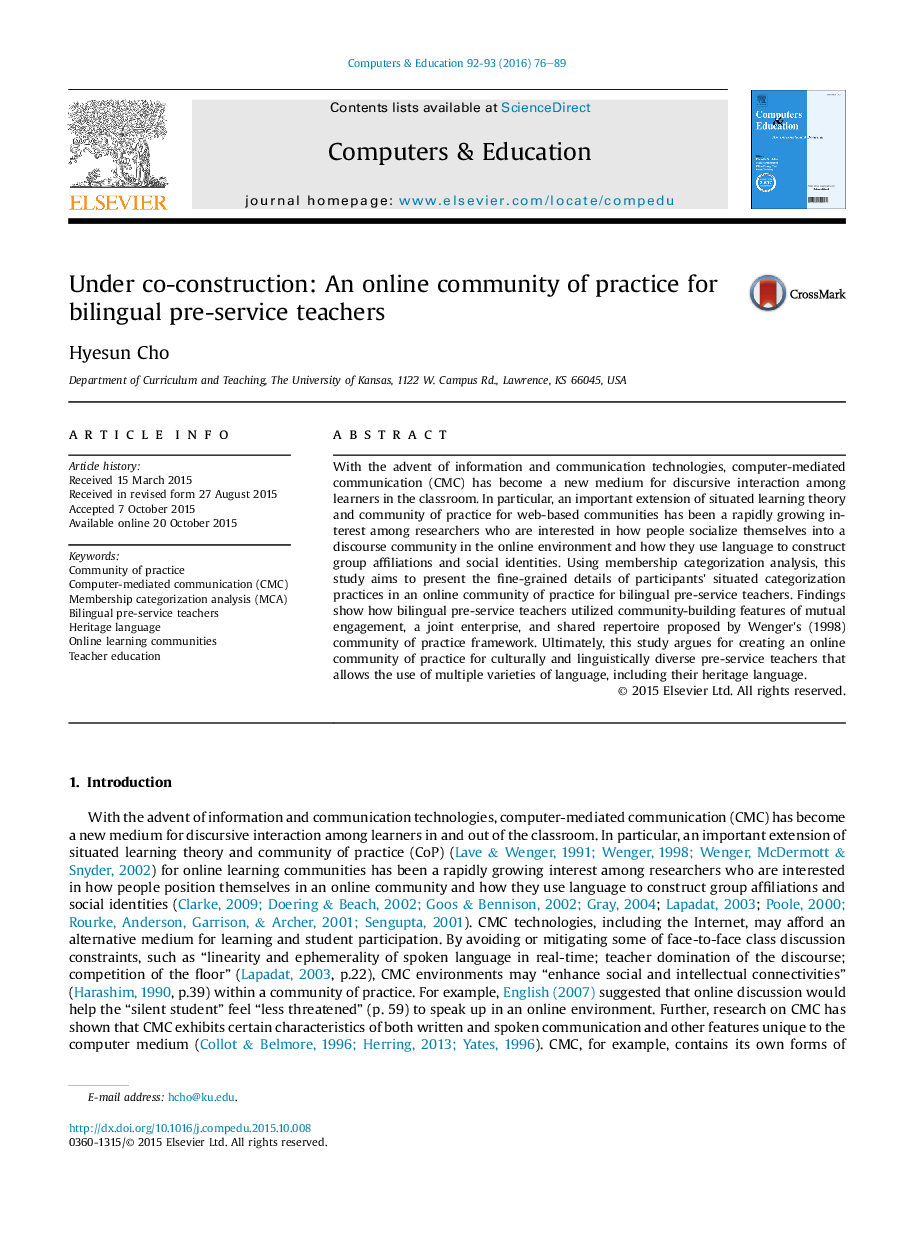| کد مقاله | کد نشریه | سال انتشار | مقاله انگلیسی | نسخه تمام متن |
|---|---|---|---|---|
| 348217 | 618168 | 2016 | 14 صفحه PDF | دانلود رایگان |
• An online community of practice (CoP) was co-constructed by bilingual pre-service teachers.
• Membership categorization analysis (MCA) provided the fine-grained details about social interactions among participants.
• Instances of mutual engagement and a joint enterprise were manifested in the online discussion data.
• Affective stance was used as a shared repertoire among pre-service teachers.
• Personal narratives, including multiple varieties of languages, were found in the online CoP.
With the advent of information and communication technologies, computer-mediated communication (CMC) has become a new medium for discursive interaction among learners in the classroom. In particular, an important extension of situated learning theory and community of practice for web-based communities has been a rapidly growing interest among researchers who are interested in how people socialize themselves into a discourse community in the online environment and how they use language to construct group affiliations and social identities. Using membership categorization analysis, this study aims to present the fine-grained details of participants' situated categorization practices in an online community of practice for bilingual pre-service teachers. Findings show how bilingual pre-service teachers utilized community-building features of mutual engagement, a joint enterprise, and shared repertoire proposed by Wenger's (1998) community of practice framework. Ultimately, this study argues for creating an online community of practice for culturally and linguistically diverse pre-service teachers that allows the use of multiple varieties of language, including their heritage language.
Journal: Computers & Education - Volumes 92–93, January–February 2016, Pages 76–89
